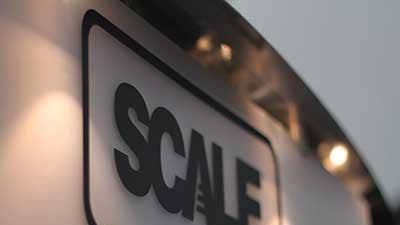Scale Computing CEO On Sales ‘Tailwinds’ From Dell-VMware Closer Ties
‘Those lines are far blurrier than they use to be in terms of the difference between Dell and VMware. We’re seeing partners say, ‘Look I want to offer my customers something else and I need to offer them something that’s not in that one size fits all Dell category,’” says Scale Computing CEO Jeff Ready in an interview with CRN.

Jeff Ready Is Bullish About Scale Computing’s Sales Spike
Scale Computing is witnessing “tremendous growth” targeting triple-digit annual revenue growth this year thanks in part to channel sales momentum as some solution providers are looking for an alternative to Dell Technologies as Dell and VMware tighten their relationship, says Scale Computing CEO Jeff Ready.
“Dell and VMware are now one and the same,” said Ready in an interview with CRN. “Those lines are far blurrier than they use to be in terms of the difference between Dell and VMware. We’re seeing partners say, ‘Look I want to offer my customers something else and I need to offer them something that’s not in that one-size-fits-all Dell category.’ Thus the Scale platform with its full feature set is a logical alternative to present.”
Indianapolis, Ind.-based Scale Computing, who made CRN’s 2019 Software-Defined Data Center 50 list, has added 150 net new channel partners over the last year as sales have increased in the high double-digit rate in the first six months of 2019 year over year. On Tuesday, the hyper-converged and edge computing specialist launched a new line of cost-efficient edge appliances, the HE500 series, targeting remote multi-site deployments.
In an interview with CRN, Jeff Ready talks about Scale Computing’s new HE500 series, market traction and channel momentum.

You said at the beginning of the year that Scale is poised for explosive growth in 2019. Has sales growth been on par in the first six months?
So far, so good, I’m happy to report. We’re seeing just a tremendous growth exactly how I had hoped when we spoke earlier. Expect that to continue. We have some great partnerships now in Lenovo, NEC and companies like BCDVideo, which is not as much a household name but if you’re in the digital surveillance market, they’re sort of the No. 1 system integrator there. With the help of our partners, we’re seeing a lot of success. What’s driving that is this overall trend in what we all call edge computing. Scale, very fortunately, has the right stack to make that work. I’m seeing the channel trying to create solutions that fit into that world and I’m even seeing these big vendors trying to create verticalized solutions that fit into a retail, manufacturing, logistics and distribution. There’s a purpose-built Lenovo platform for warehousing and distribution, well that’s powered by Scale in the backend.
Are sales up single-digits or double-digits for the first six months year over year?
High double digits. We’re growing really fast. … As high as our growth is right now, what I expect through the second half of the year is it probably accelerates. Maybe we can get into the triple-digits growth by the end of the year, it’s certainly heading in that direction.

What one big driver for Scale’s revenue growth?
The things that are providing some tailwinds for us is the overall shifting vendor landscape in the market. Starting with Dell going private, then buying EMC – therefore getting VMware-- now Dell has all of that. Dell and VMware are now one in the same. That sort of starts raising questions with both end customers as well as with the channel in that they’re thinking, ‘How aligned with that Dell sort of behemoth am I? And what alternatives exists for customers besides that?’ Previously you thought, ‘Well there’s the hardware folks. You can buy Dell, Lenovo, you can buy HPE. There’s software, we can use VMware, maybe we use Microsoft Hyper-V, but most are going to use VMware.’ Well now those lines are far blurrier than they use to be in terms of the difference between Dell and VMware. We’re seeing partners say, ‘Look I want to offer my customers something else and I need to offer them something that’s not in that one-size-fits-all Dell category.’ Thus the Scale platform with its full feature-set is a logical alternative to present. We have some particular verticals that we do very well in. People are now looking for an alternative -- that helps us.

Do you have a lot of new channel partners coming over from Dell?
Over the last year or so, we’d added probably a total 150 partners. Our channel is around 600 to 700 partners right now. We will probably add roughly the same amount [150] over this next year. Perhaps you’ll get different growth rates in new markets. For example, we’re doing more in Europe and Asia Pacific where we have very fewer partners today. There could be much more there. In our traditional North America and Western Europe business I would expect that channel growth. Through our partnerships with Lenovo and NEC, they have their own channel network that they will empower as they see fit. I would imagine Scale’s real value-add is – even if we had 1,000 or 2,000 partners -- I still think we’d be in good shape in how I’d like our channel to work. It’s when you throw a rock from one VMware partner and hit the next VMware partner, that doesn’t have a lot of real value for anybody.

Talk about the channel sales momentum for Scale in terms of competition?
Our channel is continuing to grow. We are still fairly selective with our channel partners. Scale is intended to be an alternative, new, unique kind of solution that simply by presenting Scale paints our partners in a particularly good light. Meaning that if a channel partner of Scale presents a customer with the Scale solution, that customer thinks, ‘Oh my partner is bringing me something new and innovative.’ I would argue that doesn’t happen if the partner presents you with a Dell server. Every partner in the country is going to present you with that same server. I don’t need 100,000 partners to do that. … Traditionally, there’s been a forklift upgrade. For example, a customer bought Dell and then three years later they’re going out to bid to see what they can get. With Scale, the whole point is you’re just going to add a little bit at a time. It becomes an annuity business for the channel. Put something in today, then next year customers are probably going to buy another 30 to 40 percent at least in top of that. They’ll do it again the following year. The customer grows, the partner grows and Scale grows – that’s the fuel here.

What’s the go-to-market strategy with your new HE500 edge appliance series?
Now that we have these smaller systems, you can actually go after bigger customers. We’re seeing traction here in large scale, highly distributed-type of customers. So big retail, big manufacturing around multiple deployments per manufacturing site times multiple sites. We see traction in the fast food, quick service restaurant industry. We see traction in warehousing and logistics. The opportunity for our channel. The role of the channel partner always is to know what’s out there, know the tools are out there and then bring solutions to customer problems. One of the challenges is, there may be a conceptual solution to run a set of applications in a certain environment, but there was no tool by which to do that cost effectively. [With the HE500] Scale here is providing that platform. So for a customer now, ‘Can we actually deploy hardware and software at a location and be less than $10,000 in a single node system? Or for around $20,000, a highly available cluster, all-in [solution] including the gear and whatever applications the channel would be bringing?’ So it opens up a world of different customers in that way.

Why should channel partners be pumped about the HE500?
Certainly, this is a serviceable solution for many midmarket customers as well which has always been a strong point. We saw many customers previously that cloud not cost effectively afford a true disaster recovery or backup site, for example, because they have a $100,000 deployment at their primary location, but they didn’t have a second $100,000 to do disaster recovery (DR). Well you can deploy a small system and at least have full DR for your most mission critical applications, for example. There’s an opportunity there to drive down the cost of a true DR, highly available site. You have that as well. I’m seeing resellers that are having success in retail where you can be talking about small dollars per site but lots and lots of sites right on through to the, ‘Hey this is a smaller traditional Scale cluster that fits into a particular use case like backup.’
On the HE500 Series, we’re consuming about 4GB of RAM. So all of a sudden running a 32GB of RAM system is certainly quite possible. It might not seem like much, but when you think of retailers with 1,000 locations needing systems that run 32GB of RAM versus systems that need 256GB of RAM times 1,000 locations – that is not insignificant money.

What’s your message to your channel partners?
If the market analysts are to be believed, edge computing is poised for 50, 60, 70 percent annual growth. And we’re at the epicenter of that particular trend in addition to our ongoing mid-market hyper-converged [success] trend. We see big moves and positive moves on the video surveillance side. We see big things happening in retail. Think digital transformation. You have partners going out doing digital transformation projects, which means you have to think differently. That is what’s really driving a lot of folks over to Scale. … We’re going to work closely with our partners. I want to be a value-added partner to our channel. We are growing. The channel is functioning very well. Most exciting for our channel partners is that when customers buy Scale, they tend to come back and by more Scale on a regular, recurring basis because they have more deployments or they are expanding their environments. I’m really excited for the rest of this year.